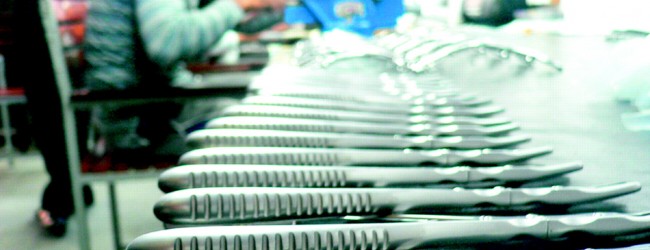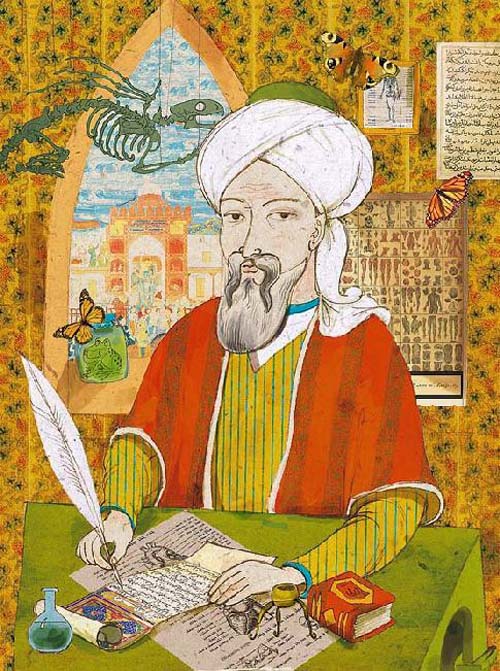
By the Editors of localhost/muslim
Access to healthcare, like Education, is now considered a fundamental human right. Delivery of effective health care cannot be achieved without an adequate healthcare system comprising facilities (hospitals and clinics), adequately trained manpower (doctors and nurses), and access to medical equipment. Over the centuries since the advent of the scientific revolution, medical instruments and devices have grown in degree of sophistication. Today, advanced medical devices allow doctors, to not only diagnose medical conditions accurately and quickly, but also provide invasive and non-invasive surgery.
 Muslims such as Ibn-e-Sina (Avicenna), Al-Razi, and Al-Zaharwi, invented some of the earlier medical techniques and surgical instruments, that have become the basis for today’s medical practice. Ibn-e-Sina’s Cannons of Modern Medicine, was being taught for centuries across Europe. Many of the inventions of the early days – such as the ‘stitch’ – have existed till this day. However, very much like the long gone days when astrolabes and celestial spheres were being created across the Muslim World, the basic tart and science of conceiving and creating these instruments is long extinct within the Islamic World.
Muslims such as Ibn-e-Sina (Avicenna), Al-Razi, and Al-Zaharwi, invented some of the earlier medical techniques and surgical instruments, that have become the basis for today’s medical practice. Ibn-e-Sina’s Cannons of Modern Medicine, was being taught for centuries across Europe. Many of the inventions of the early days – such as the ‘stitch’ – have existed till this day. However, very much like the long gone days when astrolabes and celestial spheres were being created across the Muslim World, the basic tart and science of conceiving and creating these instruments is long extinct within the Islamic World.
There is one major exception. The surgical instruments industry in the city of Sialkot in Pakistan’s Central Punjab Province, is perhaps the single most important cluster to retain and build upon the former Muslim tradition of creating medical technologies of the world. This one capability, arising from a certain type of craftsmanship, that this city has made its own, has survived for at least a couple of centuries and Pakistan today, enjoys almost complete and unmatched global dominance, in this very narrow segment of global medical devices industry.
Legend has it, that the surgical instruments industry in Sialkot came about rather accidentally during the period of the British Raj in India. Two British doctors came looking for someone capable of repairing a broken instrument and found a receptive audience among the metal artisans of this city. As they fixed these instruments, more began work began to flow in and a small cluster developed around the core capability of Sialkot.
To be fair, the surgical instruments cluster in Sialkot, in no way, embodies the kind of intellectual and technological leadership, that advanced centers of excellence of the Islamic World demonstrated in the yesteryears, but, it has – in letter if not the spirit – kept the flame alive, even though a vast majority of the ‘think’ (i.e. design and development) is done abroad (primarily in Germany) and that is also where most of the (financial) benefit accrues as well.
Nevertheless, the surgical instruments cluster in Sialkot represents a solid set of capabilities, that are akin to the pilot, from which a fire of innovation can be lit on another day. It is also the recognition of the fact, that there exists considerable talent within the Muslim World, that remains unrecognized for lack of a conducive environment for innovation.
The ‘enabling and fostering’ environment is essential for the successful creation of medical products, that can only be developed and refined by building upon existing ideas and capabilities through experimentation. Time is witness, that it is only experimentation, that has led to the birth of innovation. For example, one fine day, physicist William Roentgen was busy experimenting in his lab with electric current, without knowing what he would stumble upon, or if he would stumble upon anything at all. He shot an electric current through a special gas in a glass tube. The gas glowed. Big whoop, thought Roentgen, and covered the tube with heavy paper so he could get on with the important business of not being impressed by glowing things. The glow remained, only this time it was coming from a screen treated with heavy elements a few feet away. He decided that he would conduct further experimentation on this phenomena, as he could feel, that this could result in something significant. Hence, a little experimentation and Roentgen found out that he’d made a ray that passed through light elements, but interacted with heavy ones. What came out of this? The modern X-ray.
Experimentation, however, requires financial resources, human expertise as well as infrastructure. When there is a lack of these incentives, then cheap imitations begin to pool out of poorly resourced experiments. As a result of this, the phenomena of ‘reverse engineering’ springs forth: foreign products are dismantled, studied and replicated locally. However, this transition from the general to the specific has its benefits. It instills valuable experience and know-how into the local creators, regarding the mechanism of a certain product and likewise, the creation of it. With this, the product is able to be produced locally, which results in a lowering of the cost. Subsequently, this saves foreign exchange and enhances the capability for local production. Hence, the transition from a low tech capability to a high one, may require a lot of time and subsequent experimentation, but it does eventually benefit in the long run. The following are real personifications of scientific experiments conducted in Pakistan, that have evolved into successful products:
Ponitor: With this device, diagnosis in far flung areas is also a possibility now. Composed of a physiological monitor that collects vitals from the patient’s body via sensors, this device might likely become your next bag pack accessory, owing to its portability and affordability.
Laparoscopic simulator: Revolutionizing surgery, this device offers an in-depth perception of the area being operated upon, by translating all the movements of the surgeon, onto a screen. It enhances the accuracy of the surgery and provides visual aid for the surgeon, in order to judge his actions closely. Downside: with everything being monitored on a screen, the minutest mistake can cost a whole lot of embarrassment to the surgeon!
Prosthesis equipment: This equipment takes a value from the muscles, that command a gripper which, in turn is connected with the affected limb. The unique quality of this as compared to other similar equipment, along with its portability, is that it does not require computer interface, making it a winner.
Surgical instruments: The next time you visit the dentist, be sure to hold one of these in your hand and examine the supreme quality that the instrument has. Being currently manufactured in Sialkot, Pakistan, these surgical instruments are exported the world over owing to their excellence. These include all sorts of surgical instruments, including dental ones as well.
Fiber optic laryngoscope: This unique device, uses an indirect method of surgery. Very contemporary, this device employs hi-end fiber optic cables, with an inbuilt light source. The best part is, that the patient does not have to be anesthetized!
Bone density material (bone substitute): Nothing short of a miracle, these bone substitutes are made from biodegradable polymer, that absorb within the bone, once inserted. Not very expensive, with the need of a second surgery being wiped out, this earns full points for its effectiveness.
Having assessed the state of medical equipment in Pakistan, policies, strategies, and action plans for health technologies, specifically for medical devices, are nevertheless, required in any national health plan. Within the context of a robust health system, they ensure access to safe, effective, and high-quality medical devices that prevent, diagnose, and treat disease and injury, and assist patients in their rehabilitation.
You must be logged in to post a comment.